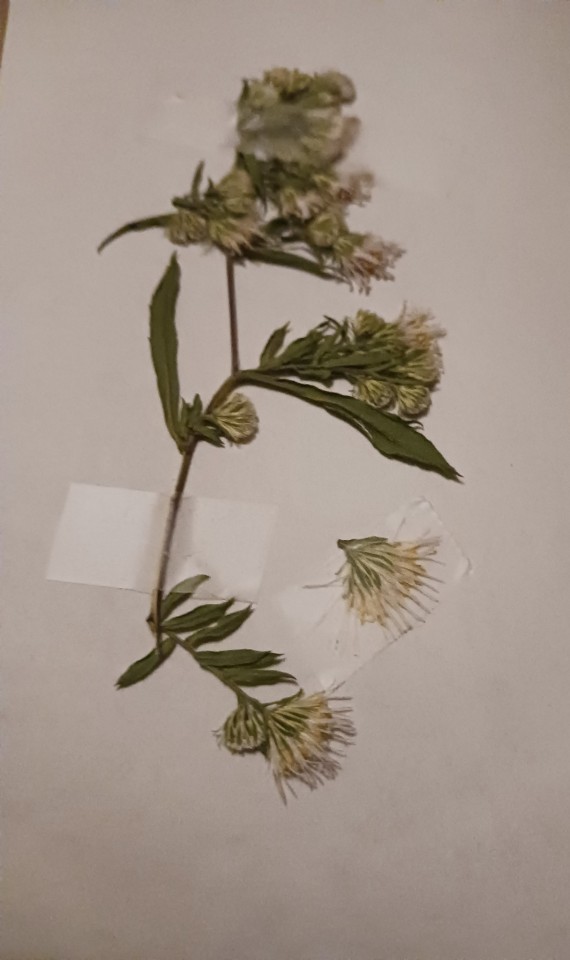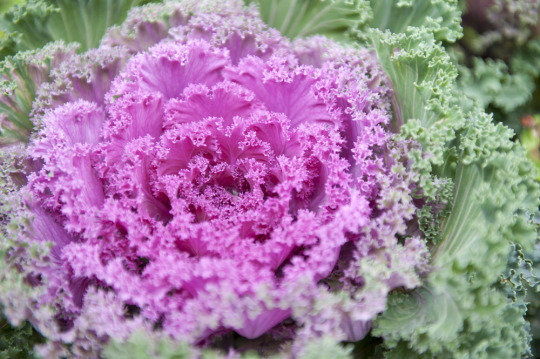#Symphyotrichum ericoides
Explore tagged Tumblr posts
Text

Symphyotrichum ericoides / White Heath Aster at William G. Milliken State Park and Harbor in Detroit, MI
#Symphyotrichum ericoides#Symphyotrichum#Asteraceae#White Heath Aster#Heath Aster#White Aster#American Aster#Aster#Native plants#Native flowers#Plants#Flowers#Nature photography#photography#photographers on tumblr#William G. Milliken State Park and Harbor#Milliken State Park#Detroit#Detroit MI#Michigan#🌺🌻
5 notes
·
View notes
Text
Flower of the day


Todays flower is Symphyotrichum ericoides, otherwise known as the Heath Aster.
7 notes
·
View notes
Text
So most of the plants that began showing signs of life in April last year are doing so now, but I am still waiting on:
Adiantum pedatum (maidenhair fern) Aruncus dioicus (bride's feathers) Asclepias viridiflora (green comet milkweed) Cardamine concenata (cutleaf toothwort) Cardamine maxima (large toothwort) Claytonia virginica (fairyspuds) Clinopodium vulgare (wild basil) Comptonia peregrina (sweetfern) Echinacea purpurea (purple coneflower) Epilobium cilliatum (fringed willhowherb) Galium boreale (northern bedstraw) Hypericum punctatum (spotted St. John's wort) Lathyrus ochroleucus (cream pea vine) Mertensia paniculata (tall bluebells) Monarda fistulosa (wild bergamot) Pycnanthemum tenufolium (slender mountain mint) Ratibida pinnata (greyheaded coneflower) Solidago nemoralis (grey goldenrod) Symphyotrichum ericoides (white heath aster) Trillium cuneatum (little sweet Betsy) Viola blanda (sweet white violet) Viola canadensis (Canada violet)
And we'll see if any more of the new ones show themselves this month. I suppose I should also track whether it's early in the month, the middle of the month or late in the month.
10 notes
·
View notes
Text
Symphyotrichum ericoides / Aster ericoides / Septemberkraut
(Possibly 'Blue Wonder')

#mine#Symphyotrichum ericoides#Septemberkraut#one of my favorite flowers in autumn!#flowers#fall#flower bush#autumn#blue flowers#blue#blue plant#plant#plants#garden#gardencore#flowercore#blooming in autumn#blooming#milkylilacsposts#gardening#florist#germany#aesthetic
30 notes
·
View notes
Photo

Scientific Name: Symphyotrichum ericoides Common Name(s): White heath aster Family: Asteraceae (aster) Life Cycle: Perennial Leaf Retention: Semi-evergreen (location dependent) Habit: Forb USDA L48 Native Status: Native Location: Plano, Texas Season(s): Fall
#Symphyotrichum ericoides#white heath aster#Asteraceae#perennial#semi-evergreen#forb#native#Plano#Texas#fall#autumn#flower#white#plantblr
1 note
·
View note
Photo


My friend Vivian and the back drop of Clifton Gorge on the left and a bit of Heath Aster, right,
Symphyotrichum ericoides
I don’t know how many individuals this is or if it’s just one (usually the case).
the densely compressed cauline leaves on clustered and condensed capitulescence giving it that almost bushy appearance is something not easily forgotten. Although it usually prefers the loamier soils and rarely tolerates alkalinity here is bank of dolostone talus and it seems to be doing well.
12 notes
·
View notes
Text

Finished pressing my first flower last night. From what research I've done, I'm pretty sure it's a Symphyotrichum ericoides, or frost aster/heath aster. More to come in spring, I hope.
#flower pressing#aster#frost aster#heath aster#Symphyotrichum ericoides#S. eriocoides#flowers#im going to probably write a bit around it when i get home tonight
0 notes
Photo

Heath Aster (Symphyotrichum ericoides)
Pleasant Valley, WI, 9-4-17
#heath aster#symphyotrichum ericoides#flower#wildlflower#original photographers#photographers on tumblr#nature photography
19 notes
·
View notes
Text



Plant of the Day
Wednesday 20 October 2021
The herbaceous perennial Symphyotrichum ericoides var. prostratum 'Snow Flurry' (heath aster) produces tumbling stems covered in tiny white daisy shaped flowers. These ground-hugging stems are much branched and can form a low sprawling cushion. Plants are useful for the edge of a border or given space to perform in a container.
Jill Raggett
#symphyotrichum#heathaster#whiteflowers#autumnflowers#containerdisplay#containers#herbaceous#herbaceousperennial#plants#writtledesign#gardens#horticulture#garden#essex
132 notes
·
View notes
Photo

https://milkylilacs.tumblr.com/post/696663028795670528/symphyotrichum-ericoides-aster-ericoides.
4 notes
·
View notes
Photo

Gonna intarsia knit this Symphyotrichum ericoides onto a sweater and no one can stop me.
56 notes
·
View notes
Text

White Heath Aster (Symphyotrichum Ericoides).
7.3.19.
16 notes
·
View notes
Photo




Here’s a preview for the necklaces I’ll be adding to the shop tomorrow! I finally got my large caps back in the mail so I’ve finally been able to finish all of the large capped pendants I’ve been storing away.
I’ve got a Wild Thyme (Thymus serpyllum), White Heath Aster (Symphyotrichum ericoides), Orange Jewelweed (Impatiens capensis) and St. John’s Wort (Hypericum perforatum) pendant available!
All of these will be going up tomorrow, Sunday the 15th, at approximately 12pm EST.
Moss of the Woods Store
146 notes
·
View notes
Text
How to Care Aster Blossom
Asters are delightful perennials that are discovered wild in North America and southern Europe. The variety Aster incorporates somewhere in the range of 600 types of generally disseminated blossoming plants in the family Asteraceae.

Asters are likewise called as Starworts, Michaelmas Daisies, or Frost Flowers. Asters are found predominantly in North America, with certain species stretching out into South America; others are conveyed all through Europe and Asia. The word Aster is of Greek induction and alludes to the Starlike blossoms that can be white, red, pink, purple, lavender and blue, for the most part with yellow focuses.
www.flowersdelivereduk.org.uk
The class Aster is presently commonly limited to the old world species, with Aster amellus being the sort types of the variety (and of the family Asteraceae). The new world species have now been renamed in the genera Almutaster, Canadanthus, Doellingeria, Eucephalus, Eurybia, Ionactis, Oligoneuron, Oreostemma, Sericocarpus and Symphyotrichum, yet at the same time the new world species are likewise broadly alluded to as Asters in the green exchange.
Asters are really 1 - 1.5 - inch blossoms. Asters are extremely convoluted blooms. An Aster bloom is really an accumulation of exceptionally little cylindrical blossoms, assembled together in a focal plate, and encompassed by supposed beam blossoms or petals, eg., Sunflower. The focal circle of blooms on the Asters is encompassed by the ring of beam blossoms. By and large the circle blossoms are an unexpected shading in comparison to the petals so the whole bloom head resembles a solitary bloom with a focal plate encompassed by contrastingly hued petals. The beam blooms on the Asters are never yellow. The cylindrical blossoms of the Asters are indiscriminate, having both a pistil and stamens; the beam blooms are generally sterile.
Some well known assortments of Asters are: Lindley's (Aster ciliolatus), New England (Aster novae-angliae), Many-Flowered (Aster ericoides), Western Silvery (Aster sericeus), Willow (Aster hesperius), Flat-Topped White (Aster umbellatus), Smooth (Aster laevis).
Realities About Asters
Aster plants are for the most part coarse-developing, verdant stemmed plants that are at times marginally woody at the base.
The greater part of the Asters are perennials, however a couple are annuals and biennials.
All Asters have interchange, basic leaves that are untoothed or toothed yet once in a while lobed.
The leaves of the Aster plant are regularly dull green and, similar to the bloom petals, can likewise be long, slim and pointed.
Asters for the most part blossom in pre-fall and fall, yet Alpine asters (Aster alpinus) bloom in May and June.
The two primary gatherings of Asters are New England Asters (Aster novae anglias) and New York Asters (Aster nova belgii).
Asters are one of the simplest greenery enclosure perennials to develop.
Asters' most serious issue is fine buildup. Asters might be spread by partitioning or developed from seed sown inside at around 70 degrees F or might be sown straightforwardly into the patio nursery after all threat of ice has passed. Germination takes somewhere in the range of 15 to 30 days, contingent upon the temperature.
Asters ought to be planted in soggy all around depleted soil in full sun, yet they will endure light shading.
Plant Asters something like 18 inches separated with the goal that plants don't frame expansive rugged bunches.
Develop clusters ought to be partitioned each 3 - 4 years in the late-winter, or pre-winter after the blooming has wrapped up.
Squeeze back the tops by 6-8 creeps in any event once amid the late spring, to make a bushier plant and to draw out the fall sprout.
Squeezing must be done before mid July, or it will have a contrary impact, and blossoming will be decreased.
Asters Plant Care
By planting Asters in a bright spot with great air flow, fine mold can more often than not be kept away from.
Asters need customary watering at their underlying foundations.
Numerous Aster assortments neglect to endure the winter whenever kept excessively clammy.
Asters ought to be chopped down subsequent to blossoming to stop seeding. Indeed, even without seeding, Asters ought to be isolated at regular intervals to remain taking care of business.
Infection in Asters can be constrained by separating them yearly in spring.
Pruning will in general postpone blooming by just a couple of days however creates an a lot prettier plant.
Asters are utilized as sustenance plants by the hatchlings of various Lepidoptera species.
Asters are generally an ideal objective for feathered creatures, honey bees and butterflies since they are fragrant and vivid.
Numerous types of Asters are dry season safe. Asters rely upon creepy crawlies to fertilize them. A few creepy crawlies that take dust starting with one plant then onto the next incorporate honey bees, butterflies, and flies.
The seeds of Bushy Asters are little achenes, and look like parachutes, which normally spread by wind.
The China Aster (Callistephus cinensis), likewise a Compositae, a local of China, is identified with the genuine Asters.
0 notes
Photo

#Symphyotrichum #oblongifolium and S. #ericoides #FallAster #HeathAster #Aster #TexasNative #TexasNativePlants #ClymerMeadow #BlacklandPrairie #NoFilter (at Clymer Meadow Preserve)
#texasnative#ericoides#fallaster#symphyotrichum#texasnativeplants#clymermeadow#oblongifolium#heathaster#aster#blacklandprairie#nofilter
0 notes
Photo

Symphyotrichum ericoides (White Heath Aster) by Roniyo888 Symphyotrichum ericoides, syn. Aster ericoides (common name white heath aster,[ white aster or heath aster), is a species of flowering plant in the family Asteraceae, native to much of North America, as well as northern Mexico. It has also been introduced to many areas beyond its native range. Heath aster is an herbaceous perennial with stems from 1 to 3 ft tall. Its leaves are sessile (stalkless) and narrow, and become smaller towards the end of the stems and branches. It has white or rarely pinkish, daisy-like composite flowerheads with yellow centers that appear in late summer through fall (autumn). They are rather small, 1⁄3 to 1⁄2 inch across. http://ift.tt/2wDUj2K
0 notes